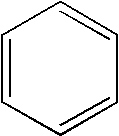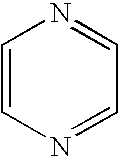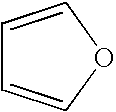Methods and systems for analyzing and determining ligand-residue interaction
a technology of ligand-residue interaction and methods, applied in the field of methods and systems for analyzing and determining ligand-residue interaction, can solve the problem that energy minimization approaches are unable to accurately estimate the free energy of binding
- Summary
- Abstract
- Description
- Claims
- Application Information
AI Technical Summary
Benefits of technology
Problems solved by technology
Method used
Image
Examples
example 1
[0047] The following data in Table 1 was generated from a simulation conducted according to the methods of the present invention on the protein Caspase-3. Amino acid residues are listed on the left hand side, while different fragment types are listed at the top. The binding affinities Bc associated with the fragment-residue pairs are listed.
TABLE 1Fragment Binding Affinity for Caspase-3tetra-acet-carbox-dimethylimida-iso-pyrimi-hydro-amideacetonebenzeneylic acidsulfoxideethanolzolebutanedinefuranureaH2OACE A 0000000000000ASN A 350−14.53000−19.1710−27.30700−12.976−22.5280SER A 36000000000000TYR A 37−21.0980−6.808000−21.307000−22.5280LYS A 3800−6.808000000000MET A 39000000000000ASP A 40000000000000TYR A 4100000000−12.472000PRO A 42000000000000GLU A 43000−17.5930−18.2330000−19.528−19MET A 44000000000000GLY A 45000000000000LEU A 4600000000000−18CYS A 47000000000000ILE A 48000000000000ILE A 49000000000000ILE A 50000000000000ASN A 51000000000000ASN A 52000000000000LYS A 53000000000000AS...
example 2
[0048] The following data in Table 2 was generated from a simulation conducted according to the methods of the present invention on the protein Caspase-8. Amino acid residue are listed on the left hand side, while different fragment types are listed at the top. The binding affinities Bc associated with the fragment-residue pairs are listed.
TABLE 2Fragment Binding Affinity for Caspase-8tetra-acet-carbox-dimethyliso-pyrimi-hydro-amideacetonebenzeneylic acidsulfoxideethanolimidazolebutanedinefuranureaH2OACE A 0−27.098−8.53000−11.1710−14.30700−6.976−22.528−17ASP A 223−27.098−20.530−3.808−12.593−22.171−13.233−30.3070−14.472−11.976−22.528−17LYS A 224−27.098−20.530−3.808−12.593−22.171−14.233−30.3070−14.472−11.976−22.528−16VAL A 225−13.098−11.530−4.808−12.593−15.171−10.2330−2.330−9.472−9.976−19.5280TYR A 226−26.098−21.530−4.808−10.593−26.171−16.233−20.307−2.330−11.472−11.976−20.528−11GLN A 227−26.098−21.530−4.808−10.593−26.171−11.233−20.307−2.330−11.472−11.976−20.528−11MET A 228−13.098−12...
PUM
| Property | Measurement | Unit |
|---|---|---|
| binding affinity | aaaaa | aaaaa |
| threshold distance | aaaaa | aaaaa |
| Van der Waals radii | aaaaa | aaaaa |
Abstract
Description
Claims
Application Information
 Login to View More
Login to View More - R&D
- Intellectual Property
- Life Sciences
- Materials
- Tech Scout
- Unparalleled Data Quality
- Higher Quality Content
- 60% Fewer Hallucinations
Browse by: Latest US Patents, China's latest patents, Technical Efficacy Thesaurus, Application Domain, Technology Topic, Popular Technical Reports.
© 2025 PatSnap. All rights reserved.Legal|Privacy policy|Modern Slavery Act Transparency Statement|Sitemap|About US| Contact US: help@patsnap.com



